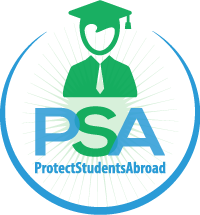What we want: Fatality Prevention

We want industry-wide science-based fatality and injury prevention.
Students are a unique and vulnerable population. Until humans reach their mid-twenties, the brain is being wired. Additionally, students have limited experience in the wider world. So when placed in a new landscape, students often have undeveloped instincts. This can result in responses a mature person would not have.
Students and parents can learn more about the safety record of a car than they can learn about the safety record of a study abroad program. Drowning, falls, fire, inadequately treated illness and injury, motor vehicle accidents, murder, and more—these are some of the ways students can die or be injured on study abroad. Yet, none of these events are stringently counted, collected, and made transparent. We believe students and parents have a right to make fully informed educational decisions, including easily accessible and comprehensive safety data from all study abroad programs.
Pre-travel safety instruction is inadequate. To date, study abroad pre-travel information has been based on some combination of shared institutional experience, common sense, and advice from federal agencies. While information about such things as food safety, infectious disease, alcohol use, and how to respond to civil unrest or natural disaster can be helpful, we believe most deaths and injuries during study abroad are injury-related, with the four leading causes as motor vehicle accidents, falls, drowning, and crime.
Through the science of aggregated data, safer study abroad experiences are possible. Counting deaths, injuries, and relevant variables during study abroad, then pooling or “aggregating” this data across geography and time, is the basis for all injury prevention strategies. Academic researchers can study this data for patterns. Then, with data-driven information, study abroad schools can make science-based improvements to programming.
Study abroad is a terrific experience—but only if students return safely.
